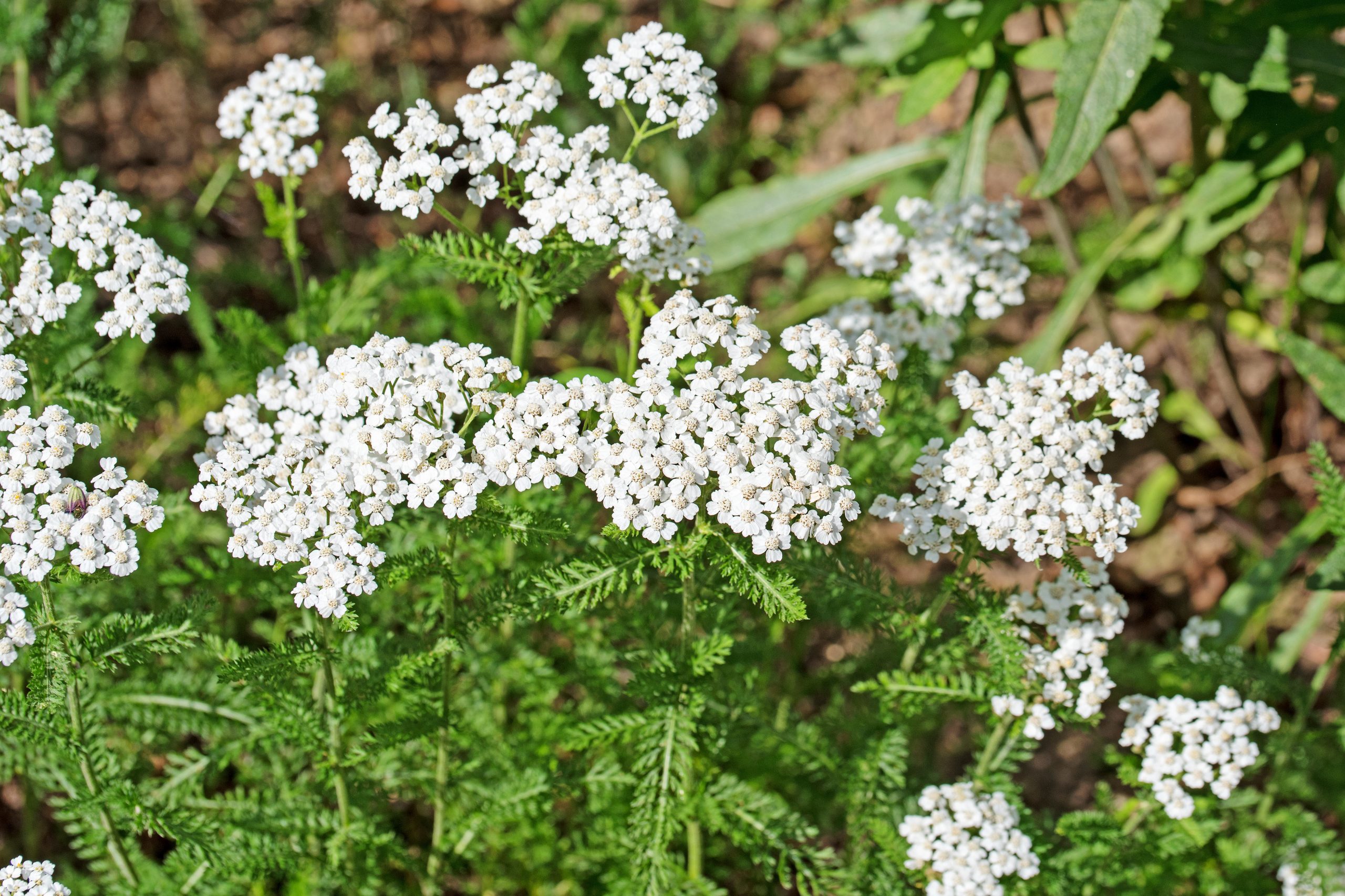Yarrow
The tough, angular stem of yarrow (Achillea millefolium) grows lancet-like, multiple finely pinnate leaves.
The inflorescence, which consists of yellowish white tubular flowers and white or pale pink ray florets, is flat and umbel-like.
Caution is advised when collecting, as there is a great risk of confusion – also with poisonous plants!
Family and collection time
Yarrow belongs to the daisy family.
Parts of the plant used: The whole herb incl. Flower
Collection time in detail:
- Young leaves: March – April
- The whole herb incl. Flowers: June till October
Healing effect and application
Medicinal properties:
Blood purifying, hemostatic, antispasmodic, vasotensive, antibiotic, diuretic, anti-inflammatory, anticancer, antiflatulent;
Application in naturopathy:
It is used as a bitter (aromaticum amarum) in stomach disorders, to stimulate appetite; in intestinal and bilious disorders, it stimulates the production of digestive juices. Menstrual and menopausal symptoms. The high potassium content stimulates kidney function, which makes yarrow very suitable for spring and autumn cures. It is best to add them to a tea mixture.
Ingredients: (selection)
- Bitters
- Essential oils
- Tannins
- Flavonoids
- Various minerals, especially potassium
Recipe for the kitchen:
The young shoots are traditional ingredient of the 9-herb soup. They are suitable finely chopped as a seasoning for egg dishes, cottage cheese, salad and herb butter
Flower syrup according to Rudi Beiser:
“Collect with the measuring cup the amount of 1 liter of appropriate flower umbrella with as little stem content. You can also add other fragrant flowers. Put them in a pot with 1 kg of sugar and 1 liter of water, let everything simmer for 5 minutes. Finally, add the juice of 2 lemons and let everything cool down. Pour off the flowers, boil the syrup again and pour it into sterile bottles. From the syrup 1 tablespoon is enough to “ennoble” a glass of tea, juice, water or sparkling wine with the fine flowers.
Recipe from: Unsere eßbaren Wildpflanzen, page 229, Rudi Beiser, Franckh-Kosmos Verlags-GmbH & Co.KG, Stuttgart
References:
Beiser, Rudi: Our edible wild plants. Kosmos Nature Guide 2018
Bühring, Ursel: Praxis-Lehrbuch der modernen Heilpflanzenkunde; Grundlagen – Anwendung – Therapie. Sonntag Publishing House Stuttgart 2005
Pahlow, M. Pharmacist: Medicinal Plants. Bechtermünz Publishing House Augsburg 2001
Schneider, Christine: Finding wild herbs. Ulmer Publishing House Stuttgart 2017
Recipe by Dr. Markus Strauß www.dr-strauss.net



